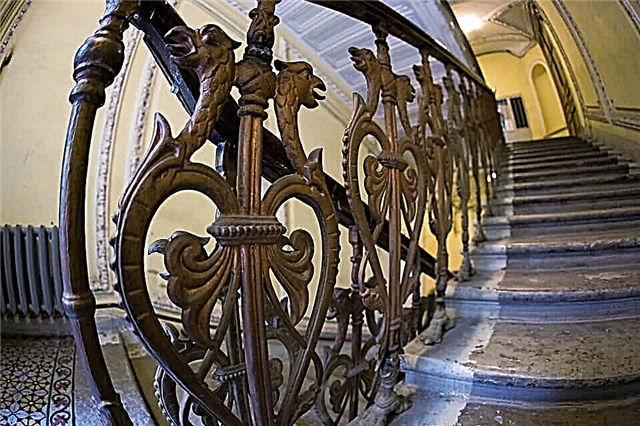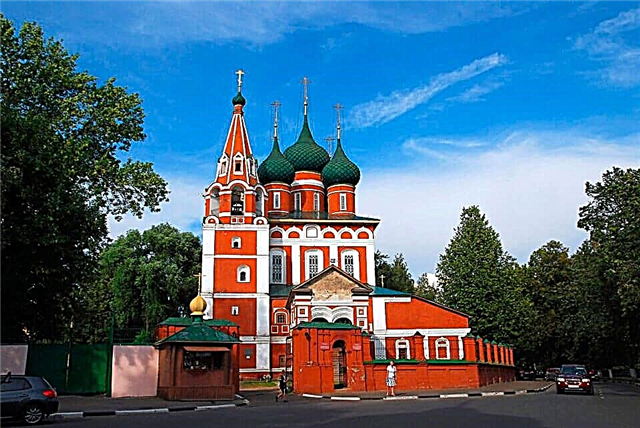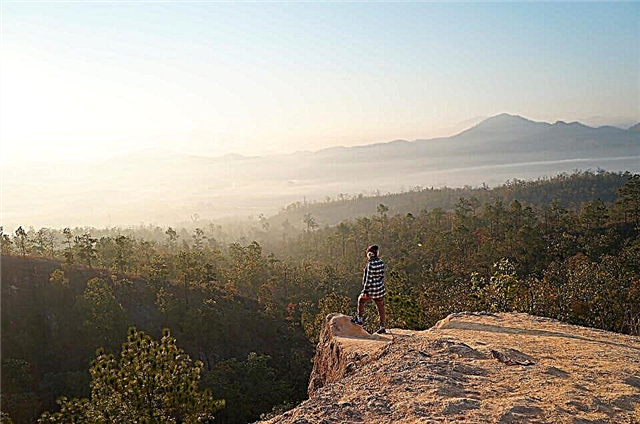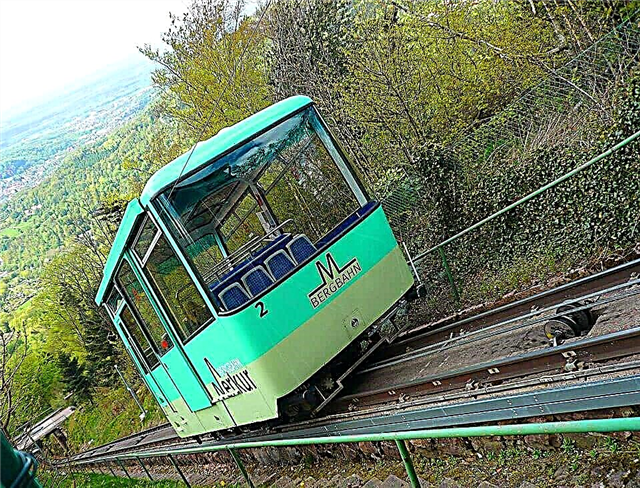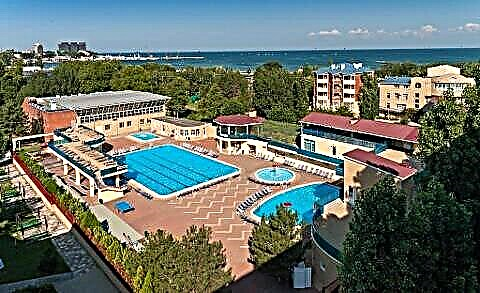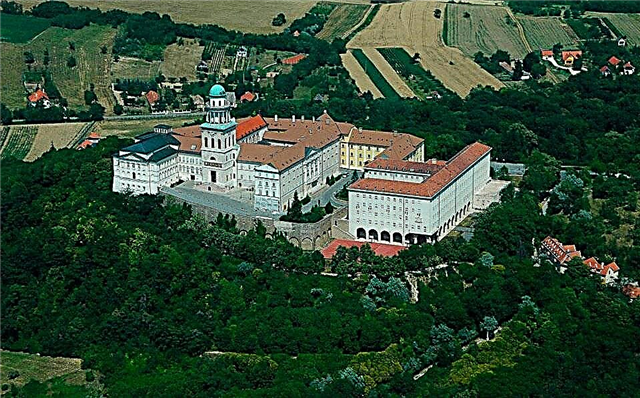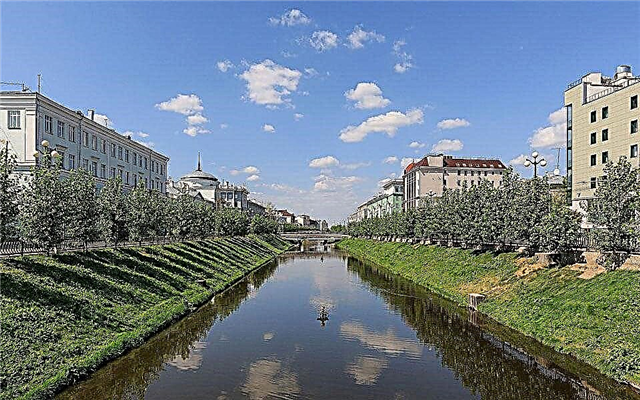Kazan is archaic and modern, burning oriental spices and coldness of the western type of architecture. The religion, culture and mentality of both the East and the West are clearly manifested in the appearance of this unpredictable city, in whose history there were too many tragedies and victories. The city was rebuilt more than once by architects of various nationalities, supplemented and destroyed. What to see in Kazan in two days? Let's try to figure it out.
1 day
Kazanka divides the city into two parts - on one bank there are futuristic monuments of modernity made of glass and concrete, on the other - the Kremlin, which began to be erected in the twelfth century, and the buildings that accompany it. There are many sights on the territory of the Kremlin. It is worth spending a whole day to visit them.
Kul Sharif Mosque

One of the main buildings located on the territory of the Kazan Kremlin is the Kul-Sharif mosque. The snow-white building, which is crowned with piercing blue domes, instantly attracts attention.
The mosque has an unusual shape - two squares intersect, forming one of the most recognizable signs of the Muslim world - "the blessing of Allah". This architectural complex has a really long history.
The origins of the construction of the mosque should be sought in the time of the conquest of the Kazan Khanate by Ivanov the Terrible, when the large-scale collapse of the former mosque of the Khanate took place. It was on its ancient foundation that the Kul-Sharif mosque was subsequently erected, which is today one of the largest Muslim temples in the European region.
Today the mosque is open to tourists. It is worth going up to the observation balconies, which offer an excellent view of the historical Kazan in its authentic atmosphere.
Tower Syuyumbike

The brightest symbol is the Syuyumbike tower, which has not only a purely historical significance, but in some way mythological - many urban legends are associated with the Syuyumbike tower.
Too many secrets have gathered around this tower - even the approximate date of the construction of this architectural monument raises questions. And everyone calls something newer the reason for the construction: someone says that the princess Syuyumbike erected it for her beloved husband, someone that Ivan the Terrible built it for Syuyumbike, but she threw herself out of the seventh floor window.
In addition, this tower belongs to the so-called leaning towers, which got their name due to the presence of a rather large angle of inclination. In addition, the Syuyumbike tower is located on a hill and is an excellent observation deck - Kazanka and Volga are literally under the feet of the beholder.
Blagoveshchensky cathedral

The Annunciation Cathedral is part of the Kazan Kremlin complex. This cathedral has both historical and architectural significance.
He belongs to the sixteenth century, being the brightest representative of his era. In addition, it was erected in the spirit of the Pskov architectural school, although it is located very far from its immediate center.
Unfortunately, this style could not be preserved in its purest form, since the cathedral was rebuilt more than once. At the moment, the Annunciation Cathedral may be of interest not only to pilgrims, but also simply to tourists, since it is here that a large-scale collection of books created in the seventeenth and partly eighteenth centuries is preserved. It also houses a unique relic - the image of the Savior Not Made by Hands, created in the sixteenth century.
Hermitage-Kazan

This exhibition hall is located on the territory of the Kazan Kremlin. At the end of the twentieth century, it became the first representative office of the St. Petersburg Hermitage.
Initially, it did not have a permanent exhibition - exhibits from the main museum were simply exhibited in its halls, but today it has turned into a full-scale, independent museum, which houses collections of graphics, paintings, jewelry and historical artifacts.
One of the most valuable exhibits is a unique vessel, which resembles the notorious Aladdin's lamp in shape. This vessel dates from the ninth century. In addition to the exhibition halls, lecture halls for thematic seminars are open here. Visitors can also participate in historical reenactments.
Alexandrovsky passage

The real adornment of the Kremlin Street is the Aleksandrovsky Passage, named after the merchant who paid for its construction at the end of the nineteenth century.
This monumental building has a wide courtyard system with rounded corners topped with domes. There is a clock in every corner. According to legend, they slowed down with the death of the first owner. The design contains elements of classicism, renaissance and baroque.
It was here that glass ceilings and electric candelabra appeared almost for the first time. But despite the undoubted beauty and harmony, the fate of this building turned out to be not so rosy: a printing house, a failed museum, a hotel, a cinema - a string of owners and a sad curtain - the building was recognized as unprofitable. Reconstruction is underway at the moment.
Chernoyarovsky passage
This passage is a shining example of the Art Nouveau style that became extremely popular in the early twentieth century. This building reflects many of its features, as well as elements of eclecticism. This building is considered the second architectural monument of this type. It is noteworthy that the Chernoyarovsky passage is not an original building - it was built on the basis of two existing buildings.
They had to unite with the help of a large-scale all-metal balcony and staircase, which, unfortunately, have not survived. People interested in Masonic teachings may be surprised to find bright Masonic symbols in the design, located right on the facade.
Peter and Paul Cathedral

One of the main architectural dominants of the historical center is the Peter and Paul Cathedral, which was erected at the beginning of the eighteenth century after the arrival of Peter the Great in the city. Its appearance has preserved the unique coloring of the Naryshkin Baroque.
Thanks to the unique design details, this cathedral does not repeat any other building in the world. The delicate carving that adorns the almost twenty-five meter high iconostasis of the cathedral is striking. Unfortunately, the names of the architects who worked on this pearl of Kazan have been lost.
Park "Black Lake"

The history of the Black Lake began back in the eighteenth century, when a small lake gradually appeared from the Kazanka River, in which fish were beautifully escaped. The locals quickly fell in love with this lake and rather quickly it turned into a small recreation area.
A century later, the lakeside territory was ennobled. A wrought-iron fence and green spaces appeared. Unfortunately, soon the history of the lake turned into a different channel - the lake was heavily polluted, and the city authorities decided to fill it up, which was done as soon as possible.
From the lake, there was a perfectly rammed platform, on which a modern park was laid out, but the historical name of this territory has still been preserved.
Fountains, original arches and live music - middle-aged people and young people are happy to gather here. Maslenitsa and Sabantuy are annually celebrated here; in summer, fans of ship modeling gather here, in winter, fans of ice skating.
Monument to the carriage of Catherine II

In the second third of the eighteenth century, Empress Catherine the Great visited Kazan.Her arrival in the city was furnished with special splendor - a retinue of more than a thousand people, a magnificent rowing fleet, big names and titles.
The Empress really liked Kazan - immediately after her departure, the architect Kaftyrev was sent, who began to make the first such large-scale restructuring of the city, determining the vector of its development for the next two centuries.
The Empress presented the city with one more gift - she allowed the construction of stone mosques within the city. In memory of this visit of Catherine the Great, there is a carriage in which every guest of the capital should take a picture at random, as well as a galley, but the latter has not survived.
Monument to the Kazan cat

Bauman Street - the local Arbat - is famous for its sculptural compositions. One of the most popular among tourists is the three-meter statue of a cat, which lies imposingly in the gazebo, with a jaded expression watching the mice climbing the dome.
A historical episode is associated with this sculpture, which took place. We are talking about the years of the reign of Elizabeth Petrovna, who noticed that there were practically no mice in Kazan, and issued a decree according to which thirty cats should be delivered to her in the Winter Palace for the extermination of rodents. However, the descendants of that first thirty still serve in the Hermitage today.
Bulak City Canal

The name of this channel comes from the Tatar word "bolak", which means nothing more than "small river".
Previously, this small river separated the upper and lower parts of the city. This natural waterway was not developed immediately - only in the sixteenth century. Six bridges were thrown over Bulak. Unfortunately, until today it has not been possible to preserve the authentic wooden bridges - instead of them, the stone bridges of the same name are now thrown across the canal.
The oldest is the Bridge of Tears, which appeared in the first decade of the twentieth century. Today, there are many historic buildings along the canal, as well as offices and commercial organizations. And on the canal itself, a system of fountains was organized, which instantly turned the Bulak Canal into one of the most beautiful sights of Kazan.
Millennium Park (or "Millennium")

The park is located around Lake Kaban. Its opening was timed to coincide with the celebration of the millennium since the founding of the city. It was this millennial milestone that became the main ideological constant of this complex.
Thus, the park is fenced in a traditional style. Zilants, the mythical guards of Kazan, stand guard at the entrance. A number of zones stand out in the park, each of which has its own symbolic meaning. For example, the central part of the park is designed to demonstrate the location of Kazan at the intersection of paths connecting East and West.
In the center of the park there is a fountain shaped like a giant cauldron. It is also related to the legend of the founding of the city. Allegedly, the city was erected on the place where a miracle happened - the cauldron dug into the ground began to boil.
So far, the park project has not been fully implemented, but the city authorities plan to supplement it with a number of conceptual gardens and flower beds, thus completing the appearance of the park.
"Native village" ("Tugan avylym")

This folklore complex was also built in honor of the millennium of Kazan. It is a small copy of an ethnic Tatar village with wooden houses that can really be rented for living, wells, mills and a number of entertainment facilities. The gates of the village are always open - the entrance is free. The village is buried in juicy rowan berries, which give the settlement a festive look.
On the territory of the village there is a small pond, whose banks are lined with large stones. The village is proud of its numerous lanterns, each with its own unique style.
Here you can often see not only tourists, but also local residents - especially children. Schoolchildren often come here after classes to play - huts on chicken legs, swings, slides and a small skating rink, which opens only in winter, have been built for them.
2nd day
The second day is worth spending on visiting monuments and architectural reserves, which are located outside the city limits, but have important cultural and architectural significance. In addition, in this way you can get a little closer to the character of authentic Kazan - its origins.
Raifa monastery

The monastery was founded at the beginning of the seventeenth century. Its foundation is associated with the name of the monk Filaret, who settled on the shores of Lake Raifa.
Soon the locals found out about him and spread the news everywhere that a Holy Man was living on the shore. The construction of the monastery was not long in coming. As a result, it was he who became one of the first Orthodox monasteries erected in this region.
Today, this impressive architectural ensemble is perhaps the most significant in the entire Middle Volga region. A similar effect is achieved not only due to the perfection of the ensemble itself, but also to the beauty of the surrounding landscapes - the dark green of the pine forest, whose territory is now a protected area, and the lake itself, in which the monastery has been reflecting for more than four centuries.
Island-city Sviyazhsk

One of the iconic monuments of antiquity of Tatarstan is Sviyazhsk, which instantly evokes an association with the image of Buyan Island, immersed in turbulent streams of water and greenery. Most of the construction of the island took place during the reign of Ivan the Terrible.
During his reign, a number of monasteries and churches appeared here, many of which have managed to preserve their authentic appearance, while some are still under restoration. It is best to go to the island by boat - such a boat trip is guaranteed to leave a lot of vivid impressions.


